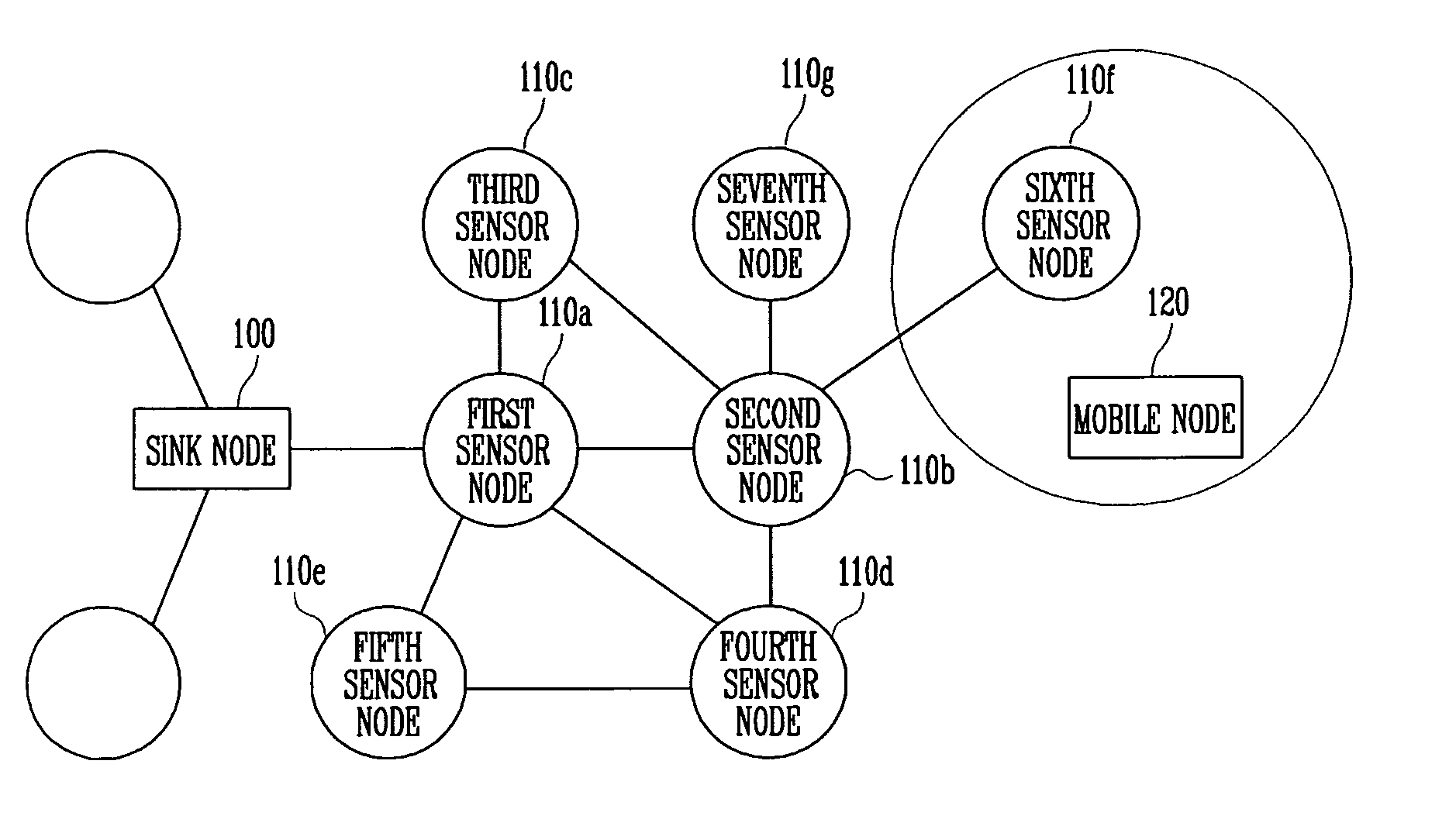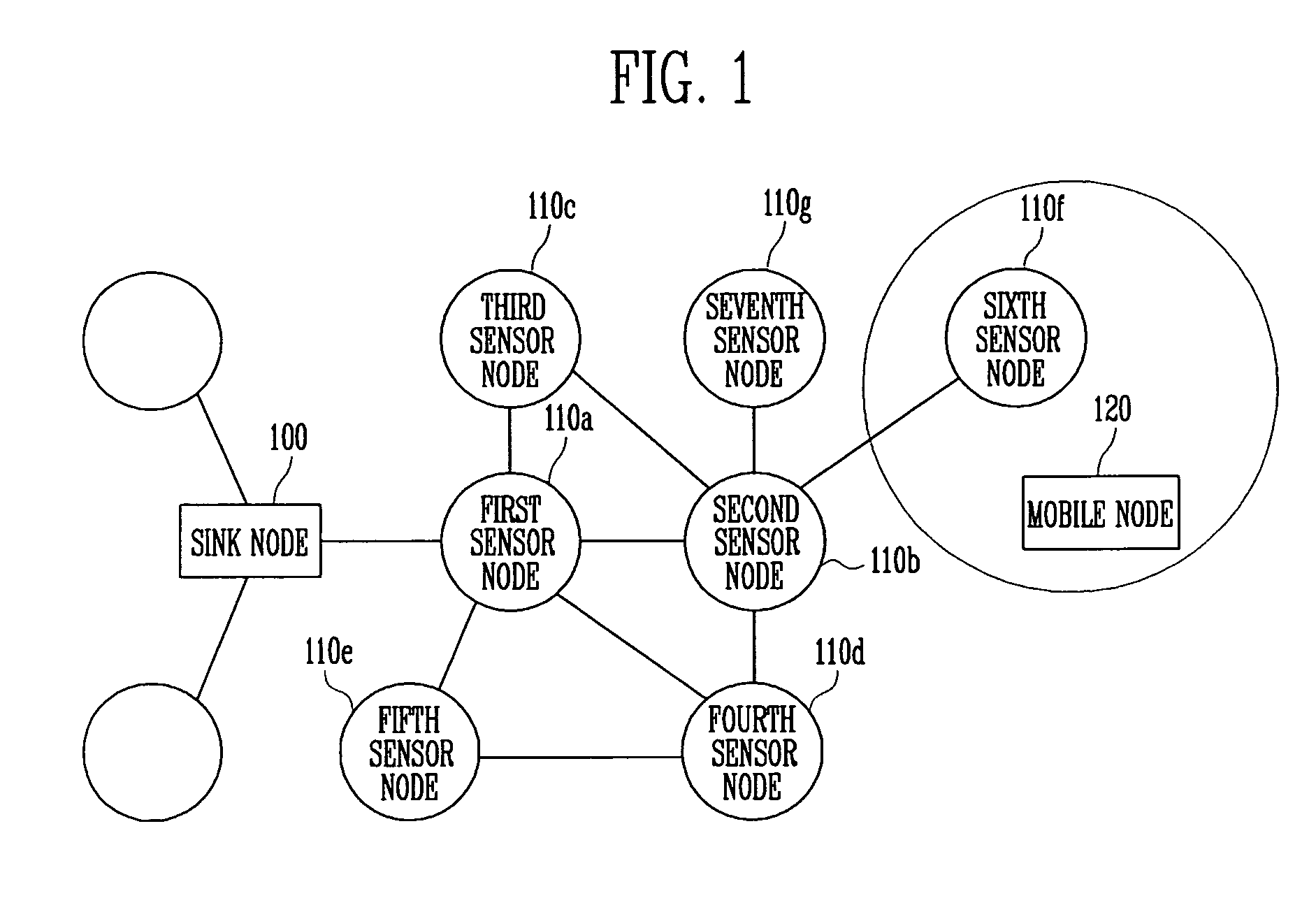Sensor node device and method for supporting mobility of mobile node in sensor network
a sensor network and node technology, applied in the direction of electrical equipment, network topologies, wireless commuication services, etc., can solve the problems of inability to notify the network layer mobile ip that the link-layer handoff takes, repeated handoffs unnecessarily, and lcs algorithm always responds slowly to the movement of the mobile node, so as to achieve the effect of minimizing packet loss
- Summary
- Abstract
- Description
- Claims
- Application Information
AI Technical Summary
Benefits of technology
Problems solved by technology
Method used
Image
Examples
Embodiment Construction
[0034] Hereinafter, exemplary embodiments of the present invention will be described in detail. However, the present invention is not limited to the embodiments disclosed below, but can be implemented in various forms. Therefore, the following embodiments are provided for complete disclosure of the present invention and to fully inform the scope of the present invention to those of ordinary skill in the art.
[0035]FIG. 1 schematically illustrates the configuration of a sensor network according to the present invention.
[0036] Referring to FIG. 1, the sensor network includes a sink node 100, at least one sensor node 110, and a mobile node 120.
[0037] The sink node 100 receives data transmitted by the sensor nodes 110 constituting the sensor network, or transmits data to the sensor nodes 110.
[0038] Further, when a Routing Request (RREQ) message for the mobile node 120 is received from any one of the sensor nodes 110, the sink node 100 uses the route along which the RREQ message is tr...
PUM
 Login to View More
Login to View More Abstract
Description
Claims
Application Information
 Login to View More
Login to View More - R&D
- Intellectual Property
- Life Sciences
- Materials
- Tech Scout
- Unparalleled Data Quality
- Higher Quality Content
- 60% Fewer Hallucinations
Browse by: Latest US Patents, China's latest patents, Technical Efficacy Thesaurus, Application Domain, Technology Topic, Popular Technical Reports.
© 2025 PatSnap. All rights reserved.Legal|Privacy policy|Modern Slavery Act Transparency Statement|Sitemap|About US| Contact US: help@patsnap.com



